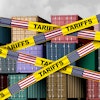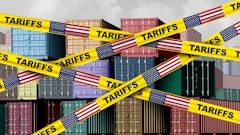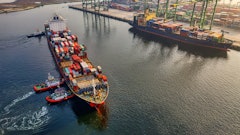
Mexico has become a top location in the previous year for global firms wishing to set up manufacturing facilities outside of Asia.
The opposite of offshore, this phenomenon is known as "nearshoring." This indicates that businesses are gradually shifting a portion of their manufacturing to nations near their markets and with comparable time zones.
This procedure was started in part to lessen the effects of supply chain disruptions. What is clear is that the world is beginning to leave the Asian superpower, just as it did when it went to China in the 1990s.
The transition has been facilitated by the close integration that exists between North American nations thanks to the T-MEC, an international agreement that promotes trade between the U.S., Canadian, and Mexican markets.
Mexico's unique position as a nearshoring hub for American companies has made it an attractive choice for major corporations seeking to expand their operations. Because of its close proximity to the United States, the largest consumer market in the world, the Latin American nation is a great choice for businesses trying to cut back on shipping delays and transportation expenses.
The perks of being near
The benefits of nearshoring are clear: greater visibility into the supply chain, shorter delivery times and the ability to influence the quality of products. These elements can significantly impact a company's capacity to compete in a global market for those that substantially rely on just-in-time delivery.
Furthermore, Mexico has leveraged its favorable business environment to attract major corporations looking to expand their operations. Recent trade agreements between the nation and the United States and Canada have aided in fostering economic growth and improving the business environment abroad.
Consequently, some businesses have declared plans to build facilities in Mexico.
The trend is not limited to the automotive industry, as companies in sectors ranging from electronics to medical devices are also taking advantage of Mexico's unique position as a nearshoring hub.
The food and beverage factor
The proximity to markets is one of the main benefits of nearshoring for the food and beverage industry. Businesses can readily reach new markets and customers by moving operations to a nearby nation without incurring significant transportation expenditures. Businesses that depend on perishable goods and need to maintain the quality and freshness of their products may find this to be very beneficial.
Using regional expertise is another benefit. Businesses can profit from their understanding of regional tastes, preferences, and laws by collaborating with regional suppliers, manufacturers, and distributors. This can assist businesses in better tailoring their products and marketing approaches to local consumers' requirements and expectations, which can enhance sales and boost client loyalty.
Moreover, nearshoring enables companies in the food and beverage industry to save costs and boost profitability. By relocating to areas with lower labor costs, companies can reduce their overhead expenses and offer their customers more affordable prices. This may be especially advantageous for small and medium-sized firms (SMEs), who may not have the resources to compete with larger corporations.
Nearshoring can also assist companies in the food and beverage industry to reduce risks and maintain business continuity. Companies can lessen their reliance on a single market and prevent disruptions brought on by political unrest, natural disasters or other external factors by spreading their operations throughout several nations.
Nonetheless, there are hazards and difficulties associated with nearshoring. Businesses, for instance, must make sure they abide by regional laws and cultural customs, which might differ greatly between nations. In order to prevent potential linguistic obstacles, logistical difficulties, and cultural disparities from impacting their operations and interactions with regional partners, they also need to address these issues.
A data-driven approach
The impact of nearshoring on the U.S. market is also significant. As more businesses relocate their manufacturing operations to Mexico, the dynamics of the U.S. supply chain will change.
This change will probably lead to shorter shipment times and cheaper shipping overall, which could help American customers by making goods more accessible and affordable.
However, the shift toward nearshoring has its challenges. For instance, the shipping sector must focus more on going paperless to stay up with the demands of a market that is changing quickly.
Businesses that are successful in implementing a data-driven strategy for their supply chains will be better positioned to enhance their predictive capabilities, allowing them to foresee and react to changes in demand more successfully.
Overall, the trend toward nearshoring is a reflection of the changing dynamics of the global economy. As companies seek to reduce costs and improve efficiency, Mexico's unique position as a nearshoring hub is likely to become increasingly important.
While there are obstacles to be overcome, there is no denying that nearshoring has its advantages, and businesses that are able to benefit from this trend are certain to prosper in the years to come.




















